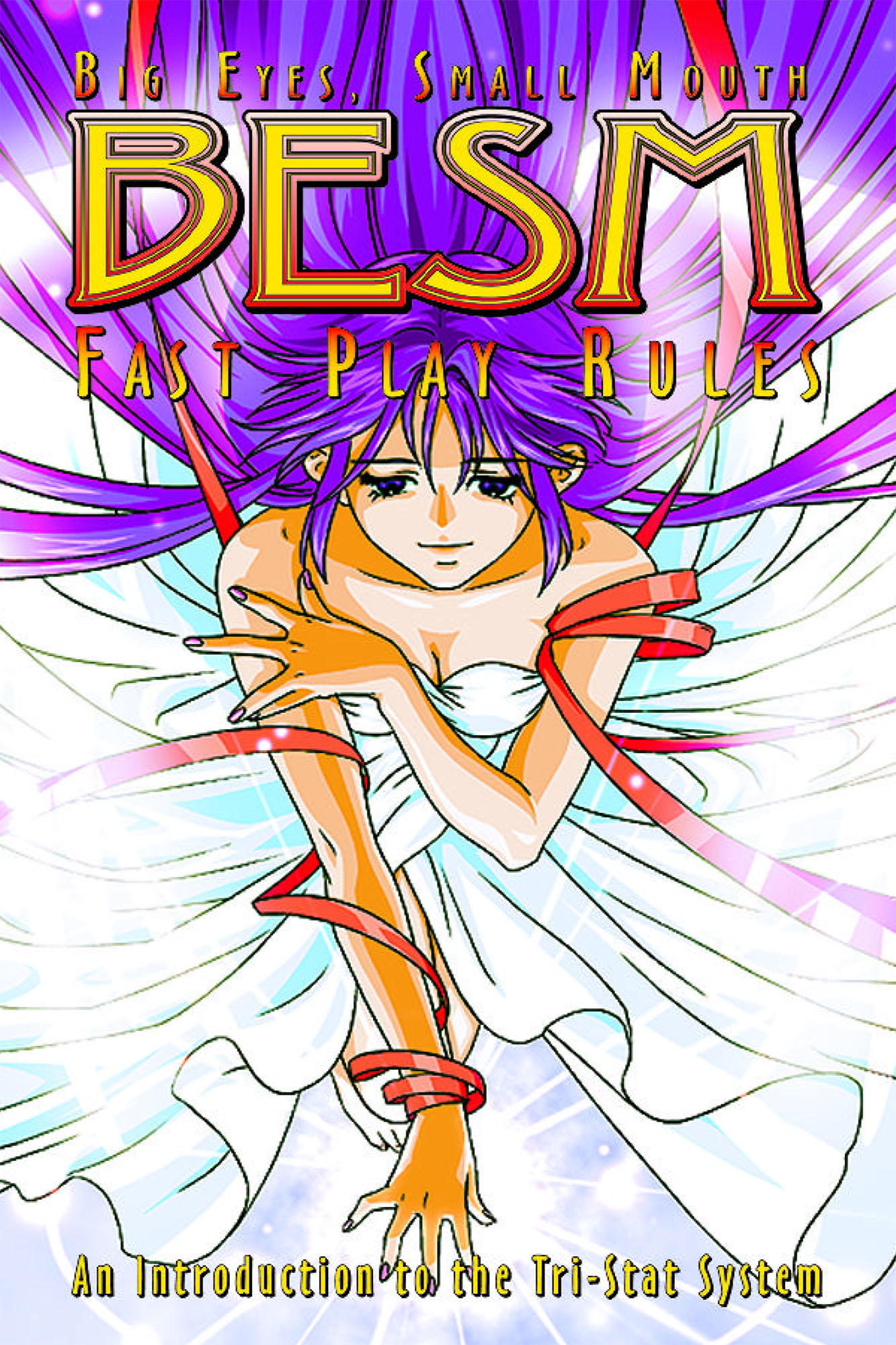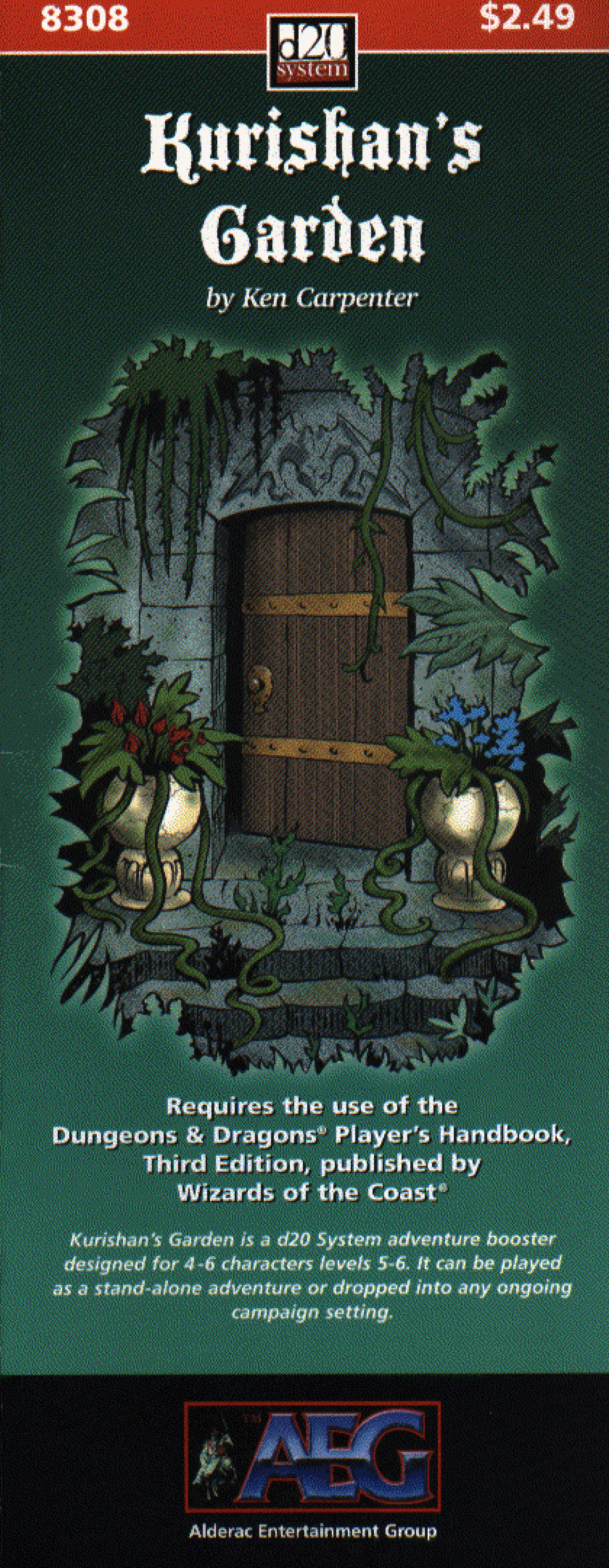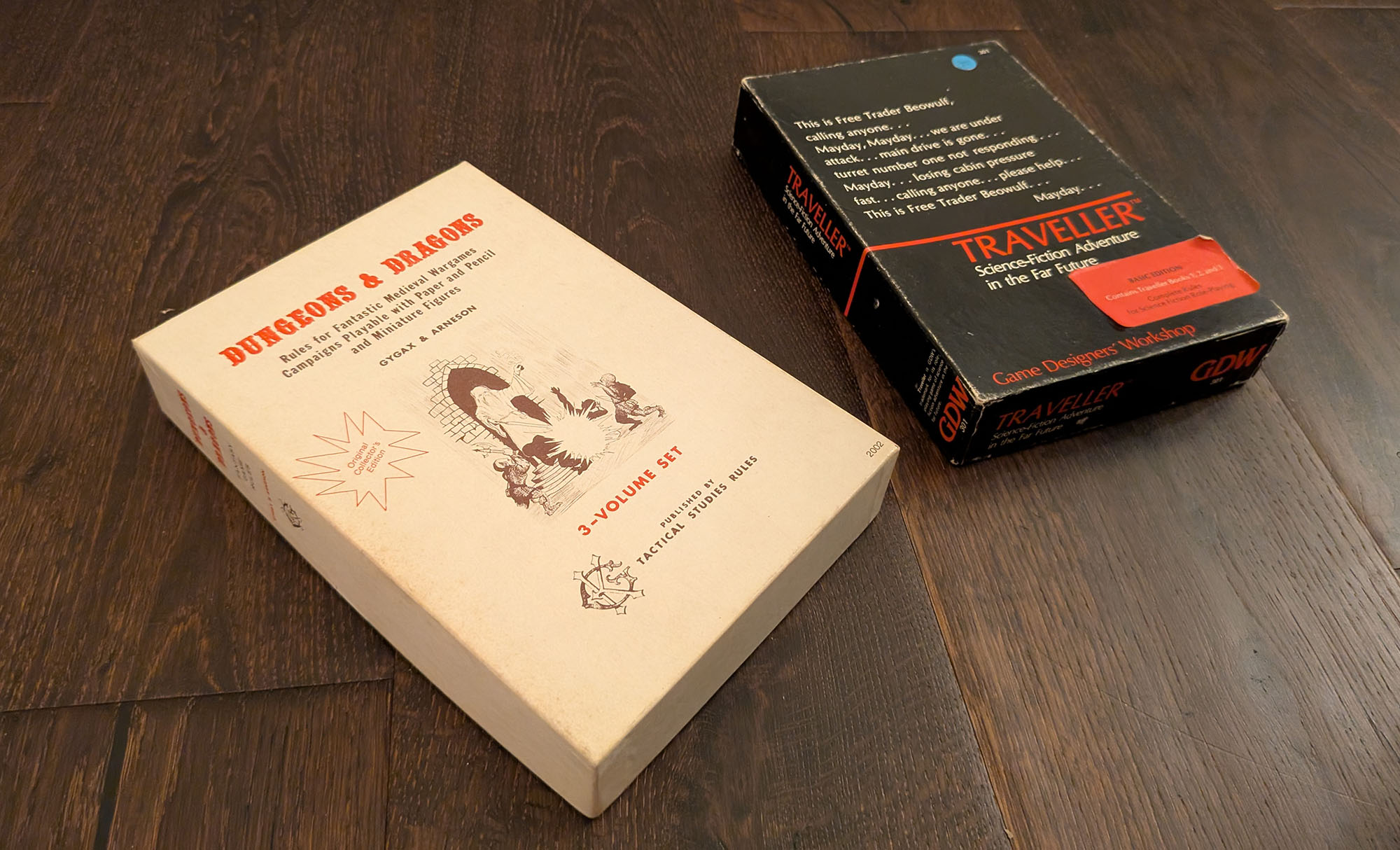
Roleplaying games use a lot of different initiative systems: individual, side-based, hot potato, fixed, freeform, and shot clocks, to name just a few. And these initiative systems can, in turn, interact with other combat mechanics in myriad ways — readying, delaying, interrupting, reacting, and such-like mechanics being common examples.
This means your best practices for handling initiative at the table will vary quite a bit depending on what system you’re running, but this particular tip is going to assume that you’re using a system in which a separate initiative check is made for each character and their actions taken in order from best to worst result. This is, of course, a fairly common arrangement, and most or all of the techniques I’ll be sharing here should be useful across common variations (like reverse declaration or rerolling initiative each round).
BATCHING INITIATIVE
Having individual initiative checks that set a specific turn sequence has a lot of advantages:
- Separate turns for each character create clarity in resolution and declaration.
- It removes the analysis paralysis of players trying to figure out who should go next.
- It allows the GM to use advanced techniques like on-decking players to speed up play.
On the GM’s side of the screen, however, it can begin creating big headaches as the number of NPCs in a fight grows. If twenty goblins led by an ogre and accompanied by a couple of earth elementals show up, for example, the GM not only needs to roll twenty-three initiative checks, they also have to keep track of them.
The solution is to batch initiative: Instead of rolling a separate initiative for every cyber-ninja in the fight, for example, you can instead roll a single initiative check for all of the cyber-ninjas and have them all take action at the same time.
Not only is this easier when it comes to rolling the initiative check, it also tends to speed up resolution. First, it lets you consult the cyber-ninja stat block once per round instead of needing to flip back to it multiple times per round. Second, it makes it a lot easier to use techniques like rolling fistfuls of dice that also speed up combat.
This technique is so useful, in fact, that it’s not unusual for RPG rulebooks featuring individual initiative checks to nevertheless recommend that the GM batch NPC initiatives. What’s oddly less common, however, is explaining exactly how you should batch the checks, particularly as enemy groups become larger and more diverse.
Here’s how I’ve learned to break it down:
First, start with the bosses/leaders. If a group has a leader, the leader gets a unique initiative, even if they’re using the same stat block as their minions. (This might also be a narrative lead rather than a diegetic one.)
Second, take all the enemies with the same stat block and group them together. This gives you the simple efficiency of the cyber-ninja.
Third, split large groups into smaller groups. This is really where the art comes into it. What constitutes a group that’s “too large” depends on you, the system you’re running, and the specific circumstances of the encounter. Generally speaking, if a group has more than five to eight NPCs in it, I’ll probably start thinking about splitting it up. I’ll sometimes make exceptions for large groups of mooks, but there are a few factors to consider:
- Action economy. From a balance standpoint, you don’t want too many bad guys ganging up on a single PC and beating them half to death before they have a chance to do anything about it. Sometimes that will happen naturally because the PCs rolled poorly on their initiative checks, but the risk increases substantially if you batch a dozen bad guys together. So split them up.
- Tactical interest. Flipping that around, fights also tend to be more interesting when your bad guys can respond to what the PCs are doing. If all the bad guys are clumped up, then you can also run into a situation where all the PCs are taking their actions without interruption. Since everyone at the table (including you!) is a fan of the PCs, this is generally less of problem. But breaking things up a bit can also make for a more interesting encounter.
- Complexity. Batching bad guys together will generally make you more efficient in running them, but — depending on the system you’re running and your comfort level with it — there will be a point where trying to deal with a large number of bad guys all at the same time becomes a liability. Pay attention to your experience here and learn where, in the current system, you need to break them up.
- Pacing. Along similar lines, no matter how quickly you’re resolving things, if you can feel your players checking out in the middle of resolving your thirteenth goblin attack, that’s a sign that you should be using smaller batches in future encounters.
VARIANT: SQUAD LEADERS
As a variant to this approach, instead of batching NPCs by stat block, there are times when it makes more sense to batch them according to tactical groups. (For example, you might have a mixed group of goblins and hobgoblins on one side of the PCs and a different mixed group on the other side.) You might also find this approach useful if you’re using adversary rosters and multiple action groups converge into a single encounter: There was a reason you grouped those baddies together into an action group in the first place, and that reason can often persist into combat. (Particularly if you have a group joining the fight after combat has begun.)
But if a mixed group has different initiative modifiers, how can you roll a collective initiative for them?
If you think of the mixed group as a squad, who’s the leader of that squad? This might be a formal or informal designation, but in either case you can simply roll initiative for the squad leader(s) and have their squad(s) take action with them.
TRACKING SPLIT BATCHES
If you have identical creatures in multiple batches, how can you keep track of which batch each creature belongs to? You don’t want Goblin A taking action as part of Batch 1 on initiative count 15 and then accidentally taking another full turn as part of Batch 2 on initiative count 8!
The first thing is to keep the batches clearly delineated in your notes. Don’t, for example, mix all the goblin hit point totals together into one big group. Keep the hit point totals for Batch 1 separate from the hit point totals for Batch 2.
If you’re running combat in the theatre of the mind, check out Random GM Tips: Visualizing Combat.
If you’re using a battlemap, there are several ways to can keep things straight in the chaos of the battlefield:
Different miniatures. Just because they’re all goblins doesn’t mean you couldn’t have one type of goblin miniature for the goblins in Batch 1 and a different goblin miniature for the goblins in Batch 2. This also works with other tokens, of course. For example, I’m a fan of using glass beads, of which I have several different colors. Each color can be used to indicate a separate batch.
If you’re painting your miniatures, it can be useful to keep this utility in mind. If you’re painting a dozen goblin miniatures, for example, you might make sure that six of them have red shirts and six of them have blue ones.
Tag tokens. If you only have one type of goblin miniature, you can still distinguish them by adding an additional tag. For example, I can also use my glass beads for this purpose, although it has the disadvantage of needing to move both miniature and bead at the same time.
You can also make discs of colored paper and attach them to the miniature’s base using blu-tack. Colored Post-It flags can also be effective.
Geographic separation. If you can keep the batches physically separate from each other (e.g., Batch 1 goblins are attacking the paladin; Batch 2 goblins are attacking the barbarian), then you may not need any additional indicator to keep them straight in your mind.
POST-INITIATIVE BATCHING
Whether you’re batching initiative checks or not, what you’ll discover is that initiative orders will often create de facto batches. For example, here’s the rolled initiative roster from one of my recent games, with PC names in italics:
18 Spider-Eaters
17 Chieftain
16 Tee
15 Harpoon Spider
14 Spider Goblins
14 Agnarr
12 Elestra
12 Nasira
8 Ranthir
6 Giant Spiders
In this case I’ve pre-batched the Spider-Eaters, Spider Goblins, and Giant Spiders by their stat blocks, rolling a single initiative for each group in addition to the initiative rolls for the Chieftain and single Harpoon Spider.
Now that I’ve rolled initiative, however, other batches naturally appear: The Spider-Eaters and Chieftain will both be taking action together before the PCs, and the Harpoon Spider and Spider Goblins will, similarly, be taking their actions together between PC turns. Notice, too, that the end of the round is also connected to the beginning of the round: At the end of the first round, the Giant Spiders, Spider-Eaters, and Chieftain will all become batched together after Ranthir takes his turn and before Tee takes her turn.
In some cases, for the sake of simplicity, you’ll still be better off ignoring this post-initiative batching and just resolving each group one at a time. But there are often times when I find that recognizing and using these de facto groups. For example, if I’m looking ahead while Tee is making her attack rolls, it would make sense to not only grab two red d20’s for the harpoon spiders, but also five blue d20’s for the spider-goblins. (Then I can roll all seven dice at the same time.) This can also open up more interesting tactical options, such as having the harpoon spiders and spider-goblins working together.
Flipping things around a bit, this post-initiative batching also applies to the PCs! For example, here’s another initiative roster from the same adventure:
19 Elestra
18 Harpoon Spiders
15 Spider Goblins
12 Ranthir
8 Nasira
6 Tee
5 Agnarr
Here you can see that Elestra will go first, but after the harpoon spiders and spider goblins have taken their turns, the PCs will effectively all be batched together. (Remember that Elestra will get grouped in as the round loops.) What this means, in practice, is that the PCs are now free to take their actions in any order. (And the same thing is true for your NPCs.) This fight is now effectively using side-based initiative, and if you – and your players – recognize this, then you can take advantage of that to gain all the benefits of side-based initiative (e.g., making it easier for PCs to coordinate their actions on the battlefield).
There are a couple caveats with this, though. First, some systems – including, notably, D&D 5th Edition – will resist this batching by locking down the initiative order. Most RPGs, however, will include some method for characters to change their position in the initiative order (e.g., the Delay action in D&D 3rd Edition), which will allow this batching to just naturally flow from the mechanics.
Even if your RPG locks down the initiative order, though, I encourage you to embrace this post-initiative batching: It unlocks creative collaboration and enables multitasking that can greatly enhance your combats.
Your players, of course, may not recognize this opportunity. You can help them learn this technique, and also help prompt them by saying things like:
GM: Okay, as Tee ducks under the last of the swooping griffons, Agnarr, Ranthir, and Elestra are the next group. What are y’all doing?
GM: Agnarr’s up next, with Ranthir and Elestra on deck. Who wants to go first?
Usually, once they get the feel for this, the players will start naturally taking advantage of the batching. You won’t need to prompt them as much, particularly if the initiative order is visible to the whole group.
The other nice thing is that, while this post-initiative batching lets you gain many of the benefits of side-based initiative, it can also avoid some of the disadvantages because there’s still a default order you and the players can fall back on to keep things moving. It can often be the best of both worlds!
Sometimes, though, this won’t work out. Whether your system locks down the initiative order or not, you’ll find that some players adapt poorly to this. They’ll either resist embracing the freedom of the batch initiative, or they may even push back and say things like, “But Teresa has to go first!” There can be a lot of different reasons for this, but it’s okay. If you’ve got a group that’s more disrupted than helped by batching initiative, then this is also a situation where you can just fall back on the default order.
PATTERNS OF ACTION
The last thing to point out is that you can use post-initiative batching for the PCs even if they aren’t all bunched together. Looking at the first initiative roster above, for example, we can see the PC vs. NPC groupings:
- NPC: Giant Spiders / Spider-Eaters / Chieftain
- PC: Tee
- NPC Harpoon Spider / Spider-Goblins
- PC: Agnarr/ Elestra / Nasira / Ranthir
Looking at your initiative rosters through this lens of batching will make clear the pattern of action, and you’ll quickly learn that different fights will naturally have different patterns, creating different pacing. Side-based initiative has one feel to it. Staccato back-and-forths have another. One-half of the PCs being separated from the other by a single creature will feel differently from when there’s a large group or multiple groups separating them.
And if your RPG allows for initiative orders to shift, then these patterns of action can, of course, also change over the course of a fight. Even barring that, as various groups are eliminated or added to the fight the pattern will change.
Here we begin to delve pretty deep into the true art of running a roleplaying game: As you get a feel for these patterns of action and the pacing that naturally flows from them, you’ll also learn how to take advantage of them, leveraging them and enhancing them and building on them.
The batching of dice rolls we discussed earlier is a simple example of this, but another advanced technique is to wait until you’ve mechanically resolved multiple actions and then batch them into a single description. Instead of resolving the Andorian’s attack roll, describing how it misses Kirk, and then resolving Kirk’s phaser fire and describing how it hits, you can instead resolve both attacks mechanically and then:
GM: The Andorian makes a break for the door, whipping out his pistol and firing wildly in your direction. Ducking under the glittering beam, you return fire, striking him in the back. He collapses in a heap, the automatic doors hissing open to let him fall into the doorway.
This technique lets you weave the action together and opens up new descriptive palettes to keep your fights fresh and interesting.
Batched initiative also creates natural groupings for this batched description – e.g., Boromir being struck by a flurry of orcish arrows; a barbarian holding a door against the battery of a dozen spider goblins; a tactical team sweeping a room. (This is particularly true if you’re rolling all those arrow attacks and door-smashing checks at the same time in one big fistful of dice.)
Recognizing the mechanical beats of the fight can help you form and pace these batched action descriptions – either by taking advantage of them or playing against them. They’re a key that will let you begin exploring the art of running combat at a deeper level, beginning a whole new journey for you as a game master.
















